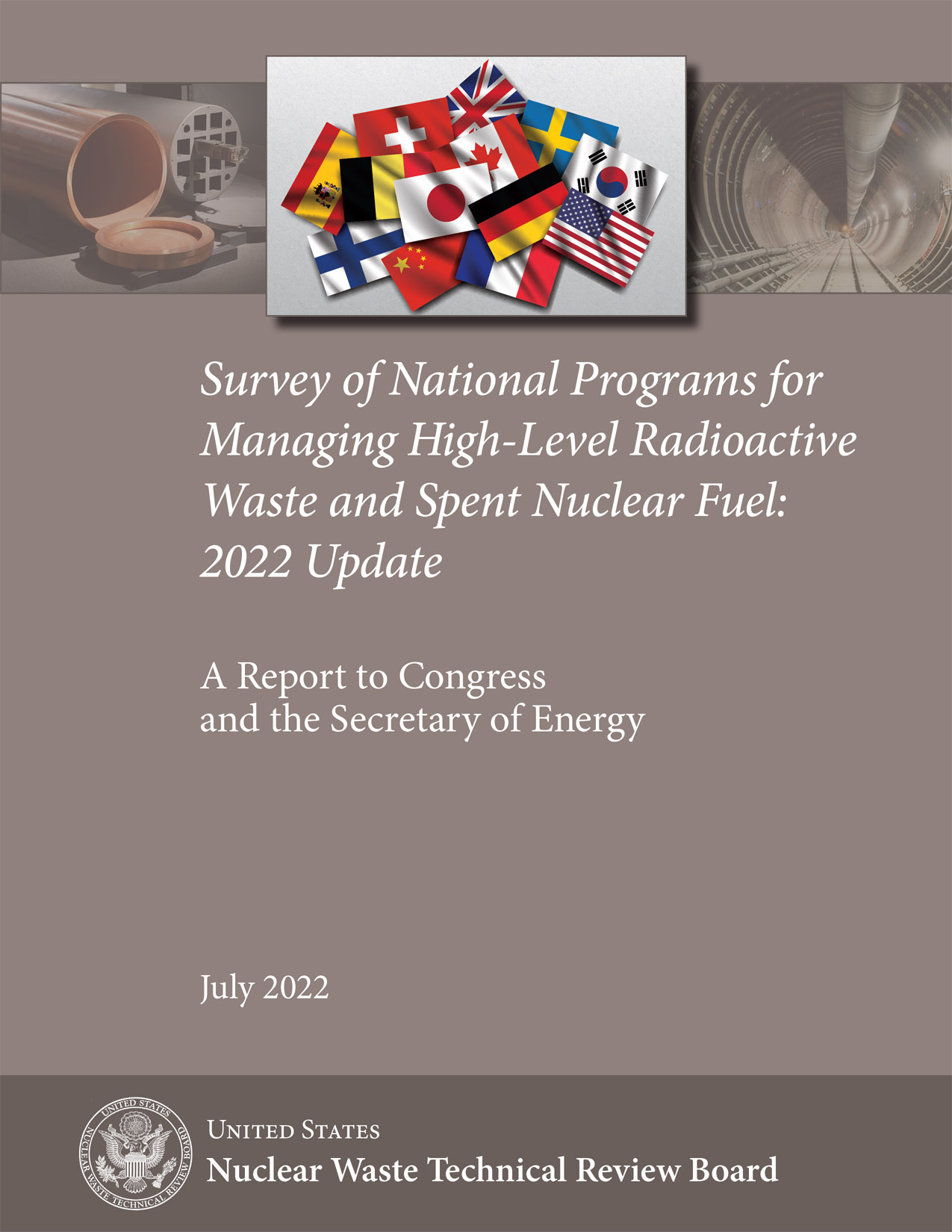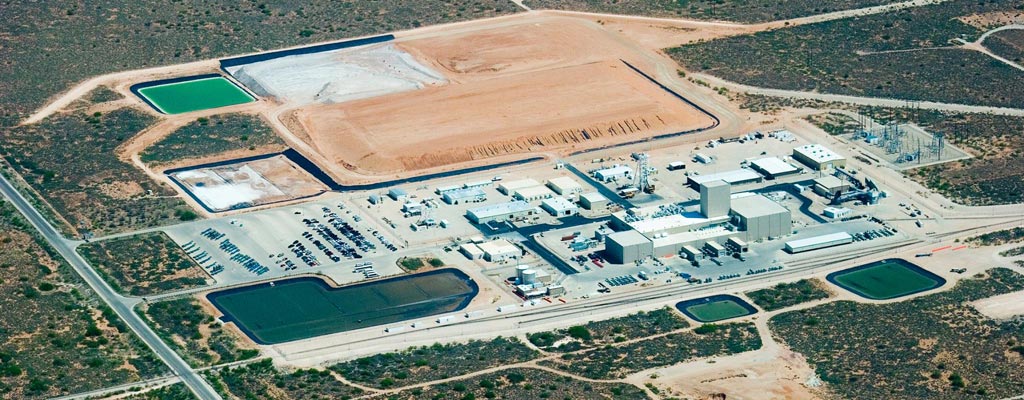A DUF6 storage cylinder is moved at the Portsmouth DUF6 conversion facility. (Photo: DOE)
The Government Accountability Office is recommending that Congress clarify the Department of Energy’s legal authority to sell depleted uranium hexafluoride (DUF6) left over from uranium enrichment operations at the department’s Portsmouth Site in Ohio and the Paducah Site in Kentucky.
A worker replaces a manipulator arm at the Savannah River’s SWPF. (Photo: DOE)
Savannah River Mission Completion (SRMC), the radioactive liquid waste contractor at the Department of Energy’s Savannah River Site, is optimizing some equipment maintenance at the Salt Waste Processing Facility (SWPF). The facility traditionally uses centrifugal contactors in the solvent extraction process, and its laboratory uses manipulators to handle process samples and equipment within its radioactive cell. The equipment requires periodic maintenance and rebuilding.
The reactor hall at the Halden research reactor. (Photo: Westinghouse)
Westinghouse Electric Company was awarded an engineering contract with Norsk Nukleær Dekommisjonering (NND) to plan the decommissioning of the country’s two nuclear research reactors, located in Halden and Kjeller. The three-year agreement includes options up to six years and is valued at up to $100 million (NOK 1 billion).
Rep. Jamaal Bowman during a hearing of the House Science, Space, and Technology Subcommittee on Energy.
The House Science, Space, and Technology Subcommittee on Energy held a hearing last week to evaluate the Department of Energy’s approach to research and development on new strategies and technologies to support the nuclear waste cleanup mission of its Office of Environmental Management (EM).
A rendering of Holtec’s proposed HI-STORE CISF in New Mexico. (Image: Holtec)
The Nuclear Regulatory Commission has published its final environmental impact statement (EIS) for Holtec International’s proposed HI-STORE consolidated interim storage facility (CISF) for spent nuclear fuel in southeastern New Mexico. Based on its environmental review, the NRC staff recommends issuing the license, subject to the findings in the staff’s ongoing safety review of the application.
Workers inspect the IWTU’s process gas filter before the current confirmatory run. (Photo: DOE)
The Department of Energy’s Office of Environmental Management (EM) said it continues to make progress toward the start of operations of the Idaho National Laboratory Site’s Integrated Waste Treatment Unit (IWTU), having completed a final test run of the facility.
Operation of the IWTU, which was constructed to treat approximately 900,000 gallons of radioactive liquid waste, has been delayed a number of times, most recently due to supply chain issues.
The Waste Isolation Pilot Plant in southeastern New Mexico.
Reston, Va.-based Tularosa Basin Range Services (TBRS), a single-purpose entity under the umbrella of Bechtel National, has been awarded the 10-year, $3 billion management and operating contract for the Waste Isolation Pilot Plant (WIPP) by the Department of Energy’s Office of Environmental Management (EM). Located near Carlsbad, N.M., WIPP is the DOE’s geologic repository for defense-generated transuranic waste.
The new contract replaces the current WIPP M&O contract held by Nuclear Waste Partnership, which expires on September 30. The contract with TBRS was announced on July 11.
The Palisades nuclear power plant. (Photo: Holtec International)
Holtec International announced on June 28 that it has completed the acquisition of the Palisades nuclear power plant and the Big Rock Point site from Entergy Corporation. The Nuclear Regulatory Commission approved the license transfer for the two sites, both located in Michigan, in December 2021.
The first steel columns, each weighing up to 28 tons, were placed for a cocoon over the former K East Reactor building at the Hanford Site. (Photo: DOE-EM)
The Department of Energy’s Office of Environmental Management (EM) said that construction is well underway on a protective enclosure, or cocoon, for the K East Reactor building at the Hanford Site near Richland, Wash.
EM reports that is has achieved one of its key construction priorities for 2022 by beginning construction of the enclosure, which is designed to protect the reactor building while the radioactivity in the deactivated reactor core decays over the next several decades, making it safer and easier to decommission.
A time-lapse video showing the construction of the cocoon’s massive 120-foot steel frame can be seen here.
An aerial view of Hanford’s Waste Treatment and Immobilization Plant in 2021. (Photo: Bechtel National)
The U.S. Supreme Court on June 21 struck down a Washington state workers’ compensation law that was designed to make it easier for workers at the Department of Energy’s Hanford Site to receive compensation benefits. The court, by unanimous decision, found that the law violates the U.S. Supremacy Clause and discriminates against the federal government and its contractors.
Located near Richland, Wash., the Hanford Site produced plutonium for the U.S. weapons program for more than 40 years and is currently undergoing a massive radiological cleanup mission involving around 10,000 workers.
A CAST Specialty Transportation truck loaded with TRUPACT-II shipping containers at WIPP. (Photo: DOE)
The Department of Energy’s Office of Environmental Management (EM) has awarded CAST Specialty Transportation a contract to provide transportation services for the Waste Isolation Pilot Plant, the DOE’s repository for defense-generated transuranic (TRU) waste near Carlsbad, N.M.
Myrna Simpson conducts molecular biogeochemistry research at the University of Toronto Scarborough. (Photo: Ken Jones/University of Toronto)
Researchers at three Canadian universities are studying whether bentonite clay—used as an engineered barrier in Canada’s proposed deep geological repository—can support sulfide-producing microbes that can eat away at the canisters containing spent nuclear fuel.
A modified forklift with a customized handling attachment is used to move spent fuel containers and their heavy bentonite clay housings. It can move autonomously or be manually operated remotely from outside the room, as needed. (Photo: NWMO)
Canada’s Nuclear Waste Management Organization (NWMO) has announced that it has successfully completed a full-scale demonstration of the engineered barriers that are designed to contain and isolate Canada’s spent nuclear fuel in a deep geological repository.
SeAH Besteel’s Gusan plant in South Korea. (Image: SeAH Besteel)
Orano TN Americas and South Korean special steel maker SeAH Besteel last week announced the completion and delivery of the first dual-purpose used nuclear fuel dry storage cask manufactured for a U.S. utility by the Korean company.
Following Orano’s purchase order in September 2019, SeAH Besteel established a mass production system for Orano’s dual-purpose casks in compliance with U.S. and international nuclear standards. Orano TN Americas is a subsidiary of France’s Orano NPS.
The Panther T16 sprays fixative with a high-pressure water cannon onto X-326 building debris at the Portsmouth Site. (Photo: DOE)
Workers at the Department of Energy’s Portsmouth Site in Ohio have been using a new tool as part of the dust-suppression systems for the X-326 process building demolition project. The X-326 was one of three massive process buildings originally built to enrich uranium at the site, which was in operation starting in the 1950s. Environmental remediation of the site began in 1989, and deactivation and decommissioning activities began in 2011. Demolition of the facility has led to a dusty work environment.
Demolition crews remove some of the auxiliary structures surrounding the main building of the Criticality Experiment Laboratory on the Oak Ridge Reservation. (Photo: DOE)
A contractor for the Department of Energy’s Office of Environmental Management (EM) started tearing down a 1940s-era facility in May at the Y-12 National Security Complex in Oak Ridge, Tenn. Demolition of the former Criticality Experiment Laboratory, also known as Building 9213, is the latest project by EM to address a large inventory of high-risk excess contaminated facilities at the Oak Ridge Reservation.




 The Nuclear Waste Technical Review Board has issued a report to the U.S. Congress and the secretary of energy examining the programs for managing spent nuclear fuel and high-level radioactive waste in more than a dozen countries.
The Nuclear Waste Technical Review Board has issued a report to the U.S. Congress and the secretary of energy examining the programs for managing spent nuclear fuel and high-level radioactive waste in more than a dozen countries.













